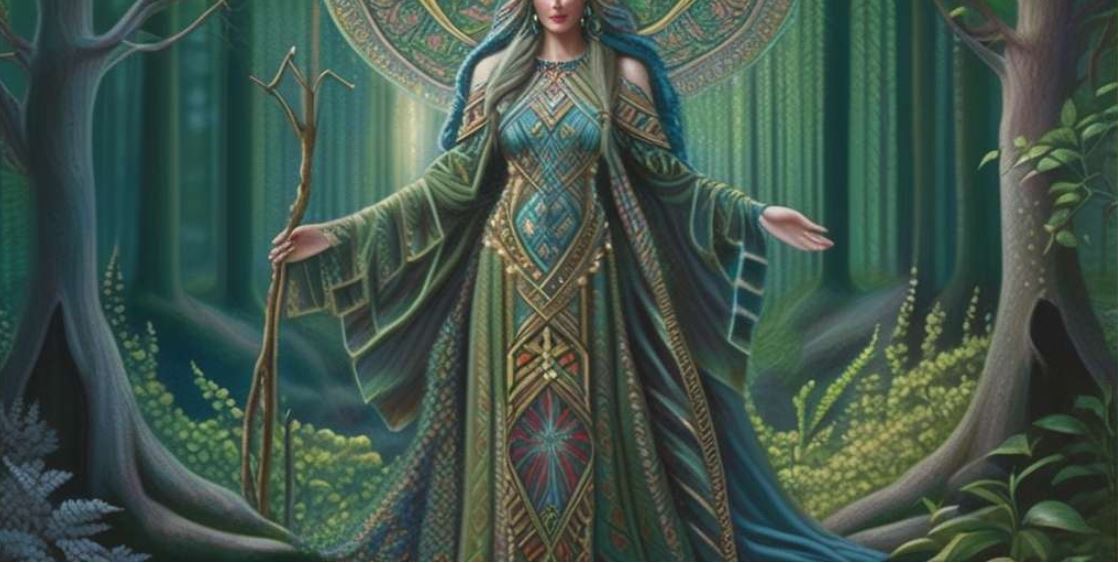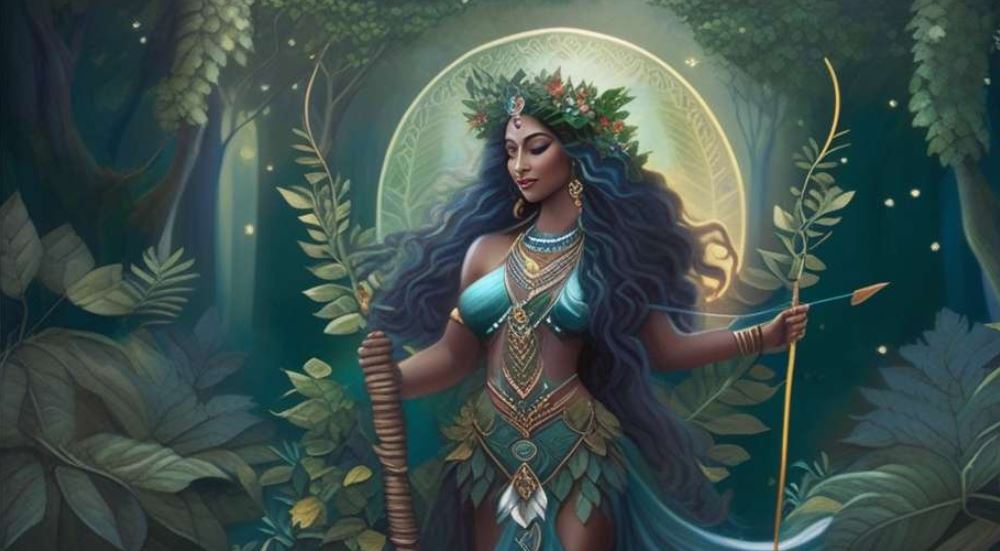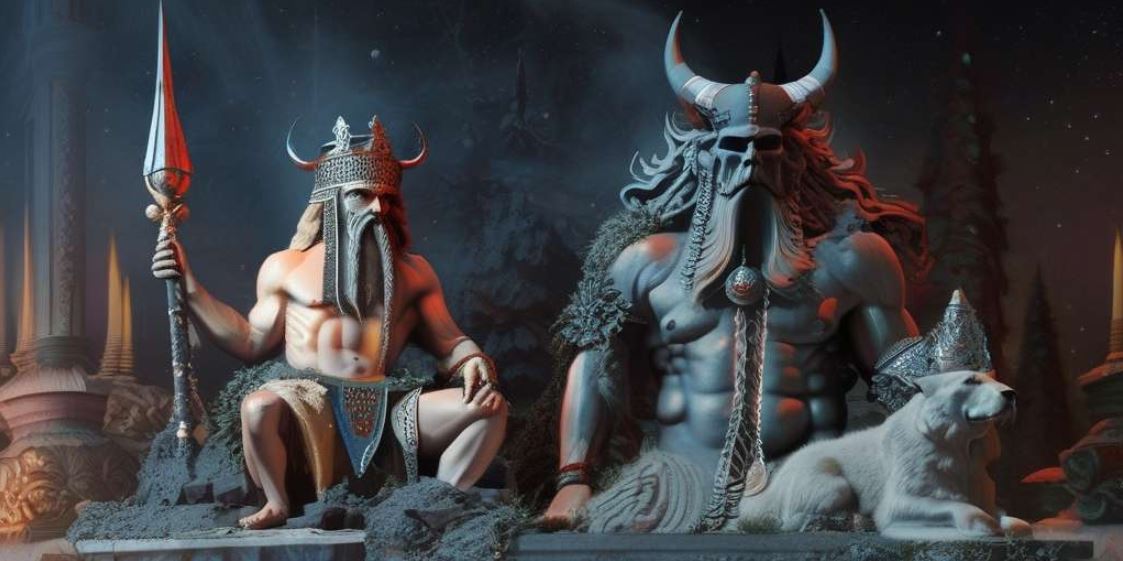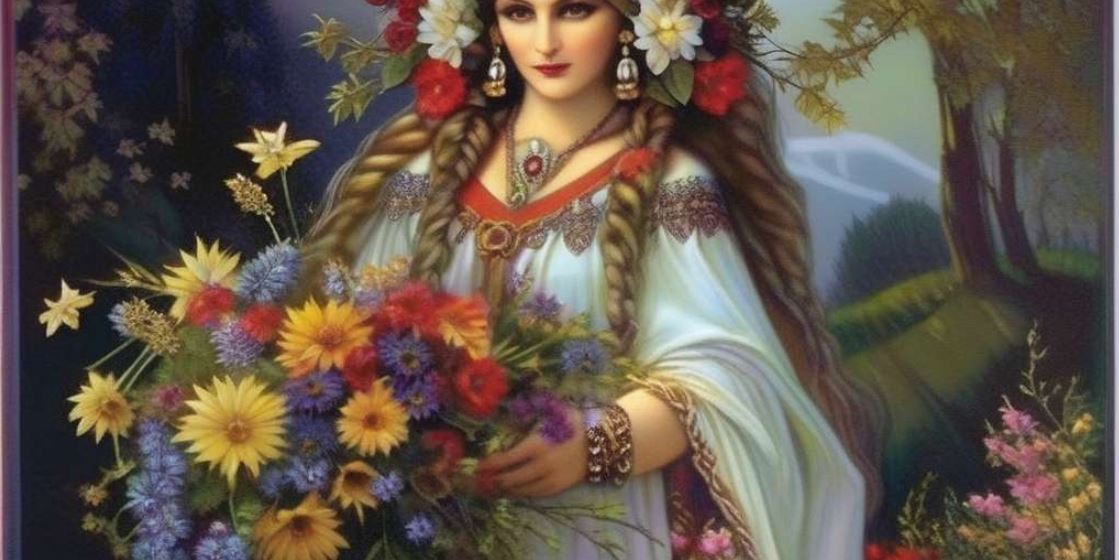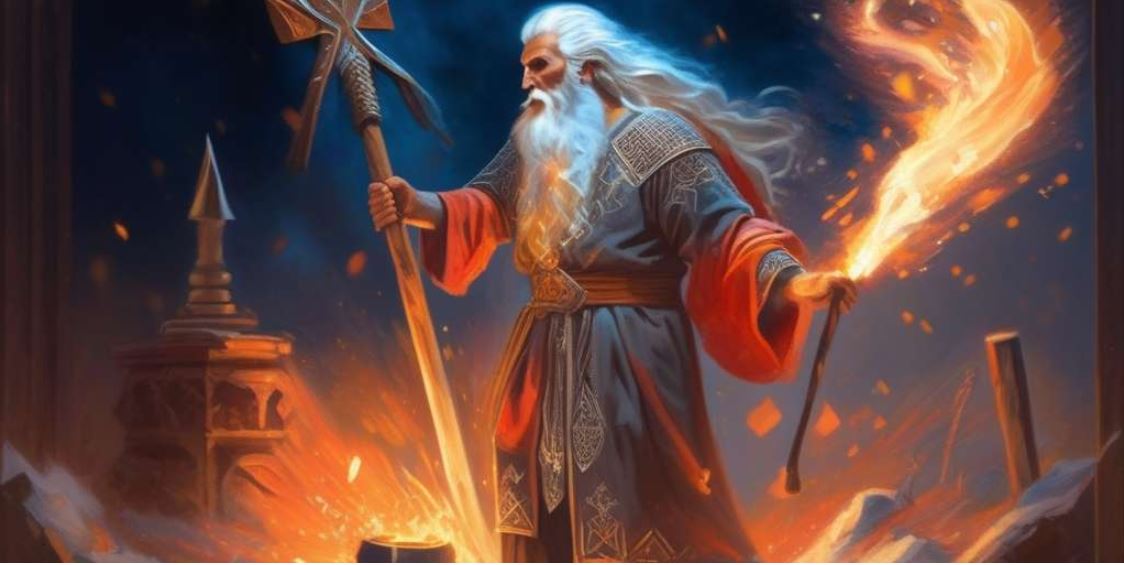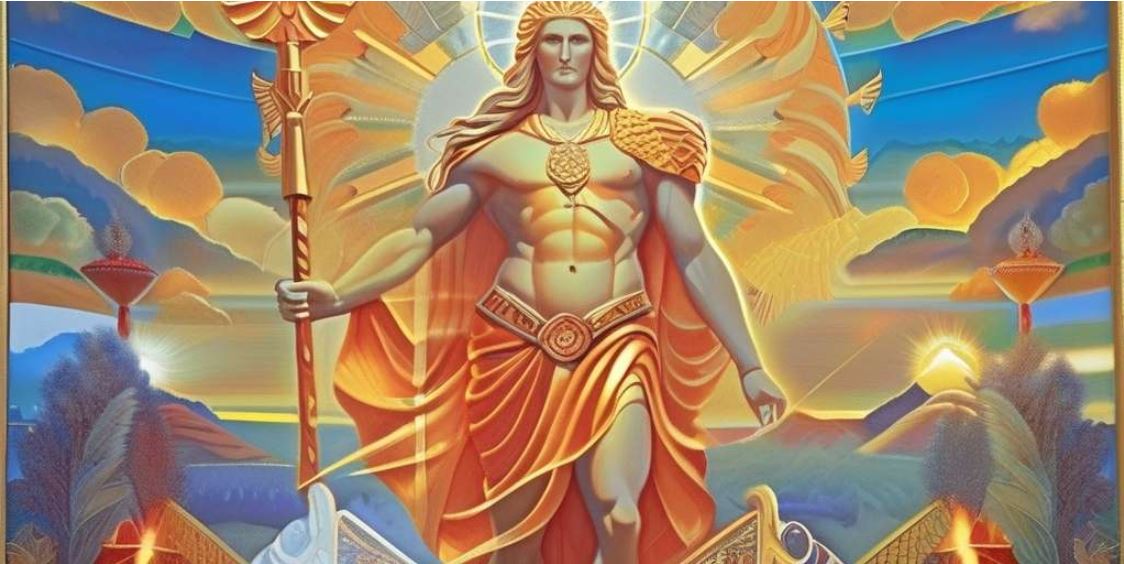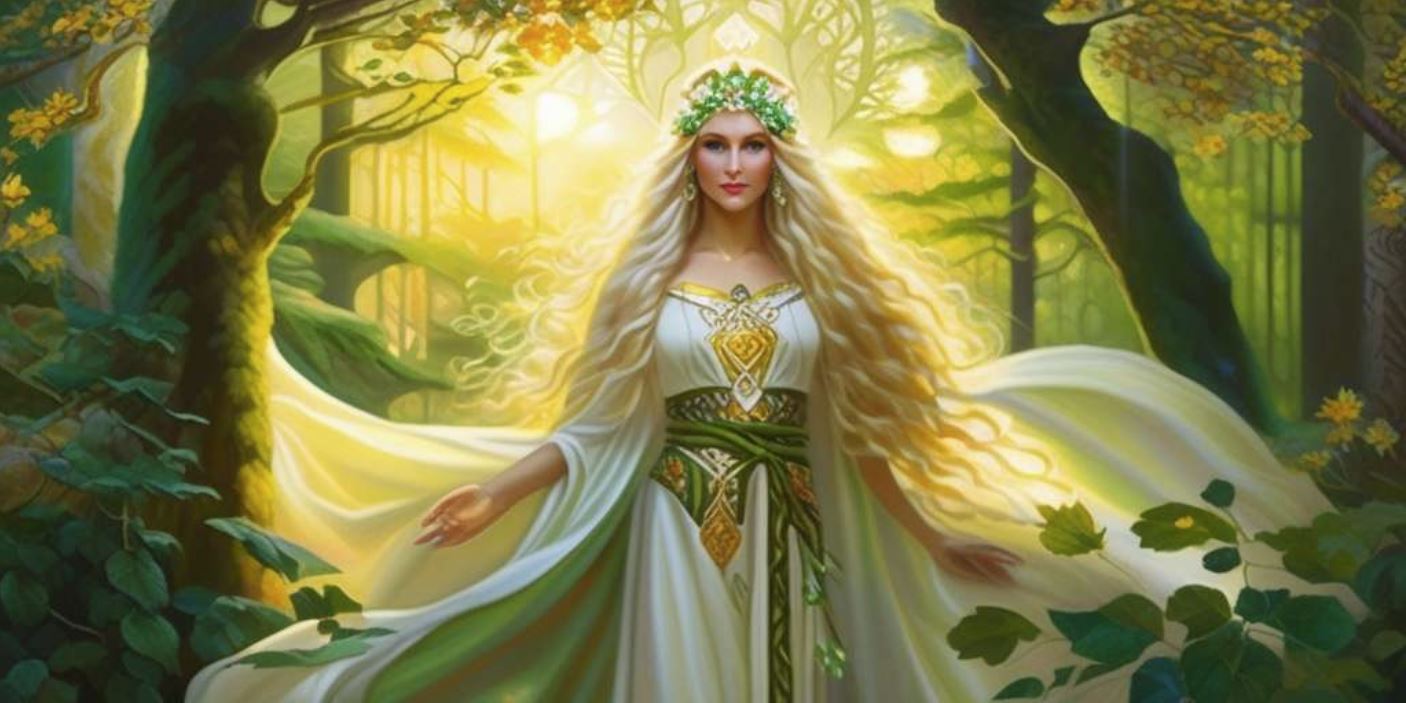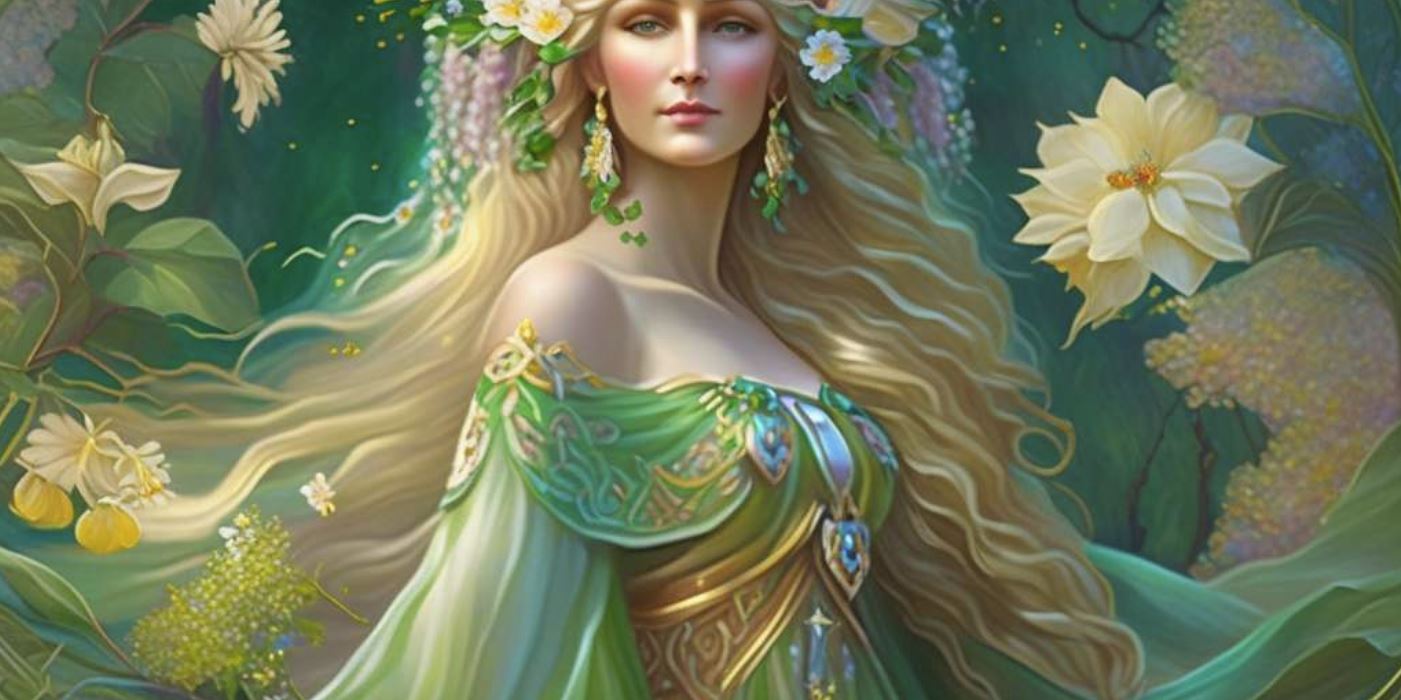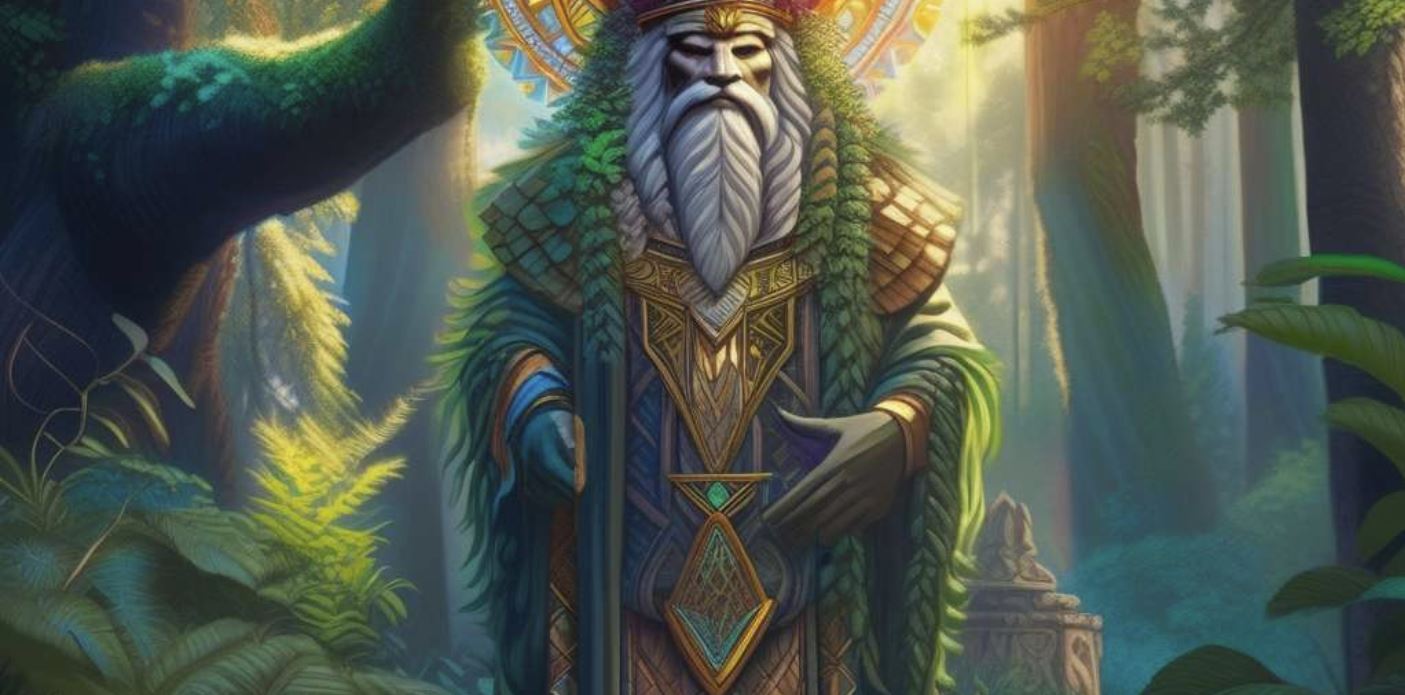Mokosh: The Supreme Slavic Goddess and Mother Earth – Unveiling the Secrets of a Legendary Figure
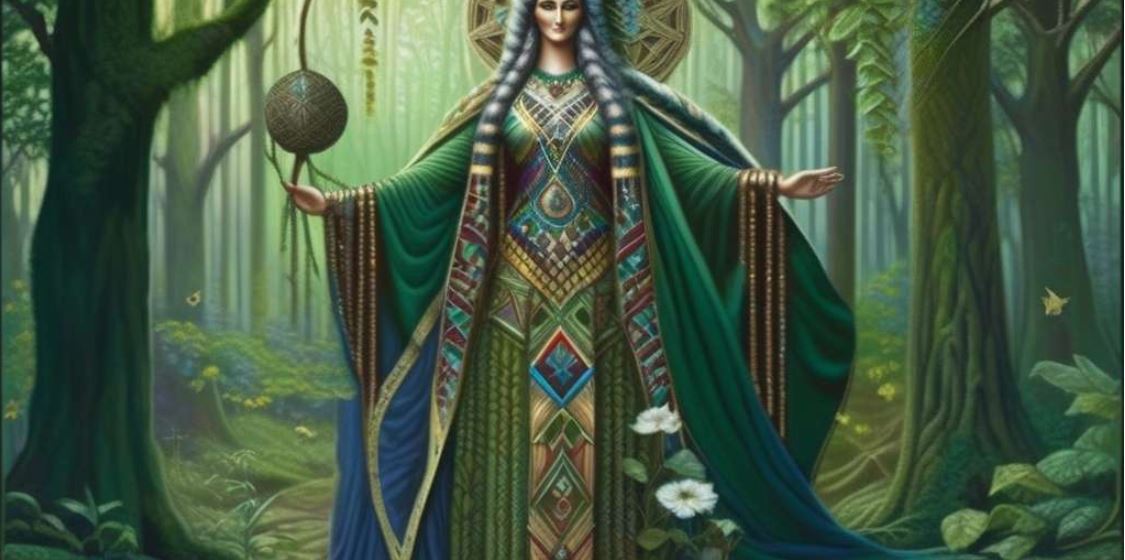
Mokosh, the Slavic goddess, holds a prominent place in mythology, revered as the supreme deity and mother earth in Slavic pantheon. Known for her roles as shepherdess, spinner of destiny, and spirit of the home, she is connected to deities like Tellus, Ziva, Rusalki, and Lada.
Mokosh’s influence extends to commerce, fishing, and her dominion over land, water, and death. Associated with places like Mokoshe, Mokoshin, and Mukushina, she is depicted with long arms and a large head, symbolizing spinning and spiders.
Converted to Christianity, Mokosh is replaced by St. Paraskeva Pianitsa in some regions.
Mokosh: The Slavic Goddess and Her Role in Mythology
In the rich tapestry of Slavic mythology, Mokosh emerges as a fascinating goddess with a pivotal role. She embodies the essence of divinity, revered as the supreme goddess and mother earth.
Mokosh holds a unique place among the Slavic pantheon, entwining various aspects of life with her influential presence.
As we delve into the depths of Slavic mythology, exploring the enigmatic realm of Mokosh, we encounter a diverse cast of deities. Through contextualization, we gain insights into Mokosh’s significance in relation to other Slavic gods and goddesses, understanding how she shapes the intricate mythological landscape.
Mokosh’s role transcends the ethereal realm; she impacts the earthly plane, overseeing fundamental aspects of daily life. As the protector of sheep, she ensures the well-being of livestock and assumes the role of a guardian for those engaged in the art of weaving.
Her multifaceted influence extends beyond domestic affairs, encompassing domains like commerce and fishing, embodying prosperity and abundance.
Within the realm of divine relationships, Mokosh’s web unfolds intriguing tales. She is intertwined with Perun as his devoted spouse, while Veles and Jarilo captivate her heart as passionate lovers.
We’ll explore these connections, shedding light on the intricate dynamics between Mokosh and other deities.
Join us on a journey through the sacred sites associated with Mokosh – from the Czech Republic’s Mokoshin to Bosnia and Herzegovina’s Mukushina. These places hold significance, deepening our understanding of Mokosh’s presence in Slavic culture.
Slavic mythology encompasses a vast array of gods and goddesses worshipped by the Slavic tribes. It is a complex system of beliefs that reflects the faith and reverence of these ancient civilizations.
The mythology revolves around natural elements, ancestral spirits, and deities associated with various aspects of life.
Mokosh in Context: Other Slavic Deities
Within the pantheon of Slavic gods, Mokosh stands as a prominent figure. However, she is not alone in this mythological realm. This sub-section examines the interplay between Mokosh and other deities, shedding light on the intricate connections they share and the roles they play within the mythological framework.
Exploring the Mythological Significance of Mokosh
Mokosh, the Slavic goddess, is revered as the supreme deity and mother earth in Slavic mythology. Her importance is evident in the various roles she embodies and the functions she serves.
As the supreme goddess, Mokosh holds immense power over the earth and its natural elements. She symbolizes fertility, abundance, and nourishment, playing a pivotal role in sustaining life. Mokosh is deeply connected to the cycles of nature, representing the essence of creation and renewal.
Mokosh’s influence extends to the realm of domestic life, where she embodies the spirit of the home and offers protection to its occupants.
In Slavic mythology, Mokosh is also associated with commerce and fishing. She is considered the patroness of traders, bestowing fortune and success upon their endeavors. Furthermore, Mokosh’s connection to fishing emphasizes the importance of sustainable aquatic resources and the livelihood they provide.
In Slavic mythology, Mokosh’s divine connections extend beyond her role as the supreme goddess and mother earth. She shares significant relationships with other deities, shaping the intricate tapestry of the Slavic pantheon.
Mokosh also shares a deep connection with Veles, the god of the underworld and magic.
Equivalents of Mokosh in Other Religions and Mythologies
The concepts embodied by Mokosh find echoes in various religions and mythologies. In Orthodox Christianity, the revered figure of St. Paraskeva Pianitsa carries resemblances to Mokosh, emanating as a patroness of commerce, marriages, and defender against illnesses.
In Greek mythology, Gaia, Hera, and Juno resonate with aspects of Mokosh’s divine essence, emphasizing their roles as earth goddesses. Similarly, Astarte in Semitic mythology shares parallels with Mokosh, revolving around the themes of fertility, femininity, and harvest.
These parallels illuminate interconnected threads of ancient beliefs, revealing the enduring influence of Mokosh throughout diverse cultural landscapes.
Places Associated with Mokosh
Mokosh’s presence and influence extend beyond mythology, encompassing various geographical locations that hold significance in Slavic folklore. Here are three notable places associated with Mokosh:
Mokoshin: A Village in the Czech Republic
Located in the Czech Republic, Mokoshin is a village steeped in history and reverence for the Slavic goddess.
The village preserves ancient traditions and rituals associated with Mokosh, serving as a living testament to her cultural legacy.
Mokoshe: An Aldea in Slovenia
In the picturesque country of Slovenia, the village of Mokoshe stands as a place of spiritual significance. Surrounded by natural beauty, Mokoshe is believed to be intimately connected to Mokosh and serves as a gathering place for those seeking connection with the divine feminine.
Mukushina: A Village in Bosnia and Herzegovina
Nestled in Bosnia and Herzegovina, the village of Mukushina is intricately entwined with the worship and veneration of Mokosh. The locals hold steadfast to ancient customs and rituals, preserving the memory of the Slavic goddess and her role in their history.
These locations stand as tangible links to the worship of Mokosh and offer glimpses into the cultural traditions and spiritual significance attached to her name. Exploring these places provides a deeper understanding of Mokosh’s enduring legacy and her place in Slavic mythology.
Symbols and Depictions of Mokosh
Symbolism has played a significant role in depicting the revered Slavic goddess, Mokosh. Within her presence, rare images and stone monuments dedicated to Mokosh have been discovered, shedding light on her venerated status.
These depictions provide a glimpse into the ancient beliefs and customs associated with Mokosh worship.
Rare Images and Stone Monuments Dedicated to Mokosh
Throughout history, stone monuments have been erected in honor of Mokosh, serving as physical representations of devotion. These ancient remnants showcase the importance placed on Mokosh, preserving her image for generations to come.
While rare, these depictions offer valuable insights into the iconography attributed to Mokosh.
Symbolism: Husos and Tela, the Rombo, and the Sacred Tree or Pilar
Mokosh’s symbols hold significant meaning within Slavic mythology. The husos (spindle) and tela (cloth) symbolize Mokosh’s role as the weaver and spinner of destiny. The rombo (diamond) represents the interconnectedness of life and the ever-turning wheel of fortune.
The sacred tree or pilar represents the deep-rooted connection between Mokosh, nature, and the spiritual realm.
The symbolism associated with Mokosh reflects the profound understanding of the natural world and its integration into daily life. These symbols showcase the cultural richness and spiritual depth embedded within the worship of Mokosh.
In conclusion, the symbols and depictions of Mokosh offer valuable insights into the beliefs and customs surrounding the Slavic goddess. Rare images and stone monuments dedicated to Mokosh serve as tangible evidence of the reverence she commanded in ancient times.
The symbolism of husos, tela, rombo, and the sacred tree provides a glimpse into the profound connection between Mokosh, nature, and the spiritual realms.
Mokosh and the Arrival of Christianity
Mokosh’s rich history diverged with the arrival of Christianity in Slavic lands. The transition marked a period of transformation for Mokosh, as her role and worship underwent significant changes.
Mokosh’s Transformation as St. Paraskeva Pianitsa
During the process of Christianization, Mokosh was gradually replaced by different Christian figures. Particularly notable is the emergence of St. Paraskeva Pianitsa as a replacement for Mokosh in some regions. St.
Paraskeva became known as the defender against diseases and patron saint of merchants and marriages.
Comparing Mokosh and Other Christian Figures
While Mokosh’s influence waned with the rise of Christianity, her legacy can be traced through comparisons with various Christian figures. Despite the differences, common threads can be observed between Mokosh and figures such as the Virgin Mary, Gaia, Hera, Juno, and Astarte.
These parallels illuminate the enduring significance of Mokosh’s divine attributes, connecting her to broader religious traditions.
As Christianity took hold, the reverence for Mokosh gave way to the emergence of different religious practices. However, remnants of her presence continued, blending with Christian beliefs and leaving a lasting impression on the cultural fabric of the Slavic people.
Mokosh in Popular Culture and Modern Interpretations
In contemporary Slavic Native Faith, Mokosh’s influence remains strong, reflecting a revival of ancient beliefs and traditions. As worshippers reconnect with their ancestral roots, Mokosh emerges as a symbol of feminine power and divine femininity in various aspects of life.
Mokosh’s Influence in Contemporary Slavic Native Faith
Within Slavic Native Faith communities, Mokosh is revered as a goddess who embodies the nurturing and creative aspects of the feminine divine. Her association with land, fertility, and weaving resonates with individuals seeking a deeper connection with nature and their ancestral heritage.
- The rituals and offerings dedicated to Mokosh often involve celebrating the cycles of nature, honoring the earth, and promoting harmony with the environment.
- Devotees seek Mokosh’s guidance in matters of family, domestic life, and the nurturing roles traditionally associated with women.
- Through festivals and gatherings, Mokosh inspires a sense of community and shared spirituality, fostering a deeper understanding of Slavic traditions.
Feminine Power and the Relevance of Mokosh Today
As society embraces the empowerment of women and the recognition of feminine energy, Mokosh’s archetype finds relevance in modern interpretations beyond Slavic Native Faith.
- Artistic expressions, such as music, dance, literature, and visual arts, incorporate Mokosh’s symbolism as a source of inspiration and empowerment for individuals of all genders.
- Feminist movements draw inspiration from Mokosh’s role as a protector of women, weaving networks of support and advocating for gender equality.
- Mokosh’s connection to Earth and sustainability aligns with the growing focus on environmental activism and the importance of preserving the planet.
Mokosh’s rich mythology and symbolism continue to captivate and inspire, offering a profound exploration of feminine power, ancestral wisdom, and a deeper connection with the natural world.
9. Exploring the Mysteries of Mokosh: Unraveling the Legacy of the Slavic Goddess
Delve into the enigmatic realm of Mokosh to unearth the enduring legacy of this revered Slavic goddess. Dive deep into the mysteries surrounding her, seeking to unravel the profound significance she holds within Slavic mythology.
Discover the untold stories shrouded in her ancient worship, shedding light on the spiritual connection she fostered with her worshippers.
Unravel the complex web of beliefs and traditions associated with Mokosh, as her influence transcends the realms of daily life. Encounter the symbolic representations intertwined with her divine persona: the sacred husos and tela, the captivating rombo, and the venerable Sacred Tree or Pilar.
Step into the footsteps of Mokosh’s devotees and explore the sacred places associated with her veneration. Embark on a journey through enchanting locales like Mokoshin, nestled in the heart of the Czech Republic, or the idyllic Mukushina in Bosnia and Herzegovina.
Intriguingly, peel back the layers of Mokosh’s existence and uncover the intricate relationships she shares with other deities in Slavic mythology. Learn of her ties to gods like Perun, Veles, and Jarilo, and discover the counterparts she finds in other religious and mythological traditions.
By delving into the mysteries of Mokosh, we gain a profound understanding of her enduring presence, and the profound impact she continues to have within both ancient mythology and the hearts of her devoted followers in the present day, preserving her awe-inspiring legacy for generations to come.
Post Navigation
Now that you have explored the fascinating world of Mokosh, the Slavic goddess, let’s navigate further into the depths of Slavic mythology and learn more about its intriguing deities and stories.
Continue your journey by diving into the origins and context of Slavic mythology in section 2, where you will find an overview of this rich and ancient belief system, along with a closer look at Mokosh’s role among other Slavic deities.
In section 3, discover the attributes and functions of Mokosh as the supreme goddess and mother earth, her role in daily life as the protector of sheep and patron of weaving, and her connections to commerce and fishing.
Uncover the intricate relationships between Mokosh and other deities in section 4, exploring her spouses and lovers – Perun, Veles, and Jarilo, as well as her equivalents in other religions and mythologies.
Interested in places associated with Mokosh? In section 5, delve into the intriguing locations such as Mokoshin in the Czech Republic, Mokoshe in Slovenia, and Mukushina in Bosnia and Herzegovina, unraveling the significance and legends tied to these places.
Learn about the symbols and depictions of Mokosh in section 6, including rare images and stone monuments dedicated to her, as well as the symbolic representations of husos and tela, the rombo, and the sacred tree or pilar.
In section 7, explore how Mokosh’s influence transformed with the arrival of Christianity, including her conversion into St. Paraskeva Pianitsa, and a comparison with other Christian figures.
Discover Mokosh’s relevance in popular culture and modern interpretations in section 8, exploring her influence in contemporary Slavic Native Faith and the empowerment of feminine power embodied by Mokosh.
Finally, in section 9, embark on a journey to unravel the mysteries surrounding Mokosh and uncover the legacy of this enigmatic Slavic goddess.
Navigate through this enthralling exploration of Slavic mythology and immerse yourself in the captivating world of Mokosh, where ancient traditions and mythical tales continue to weave their magic in the modern era.
………..

